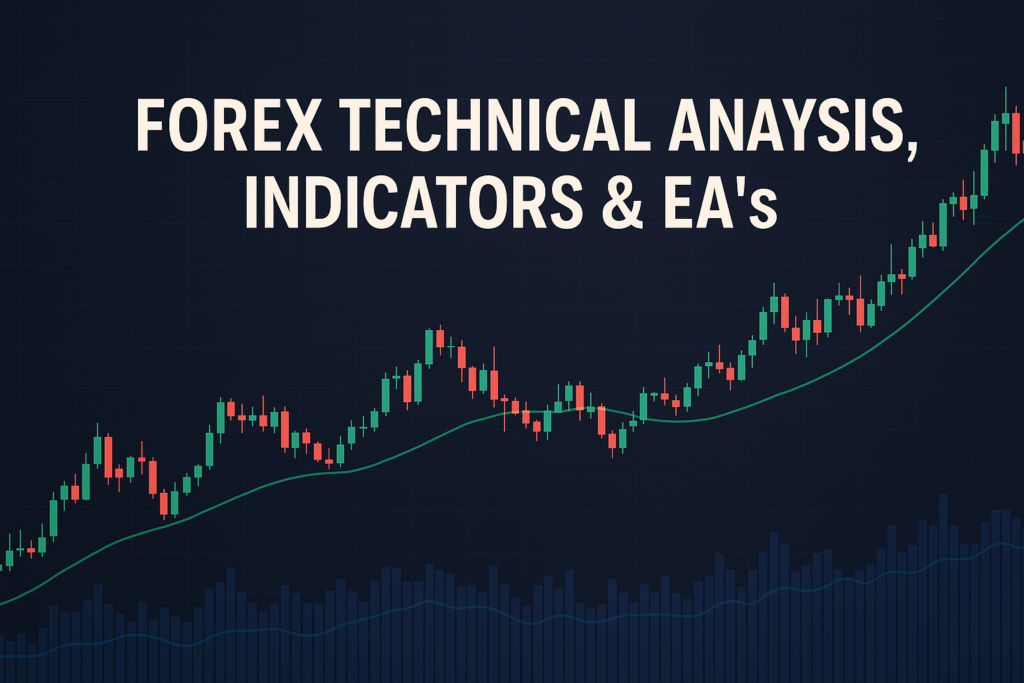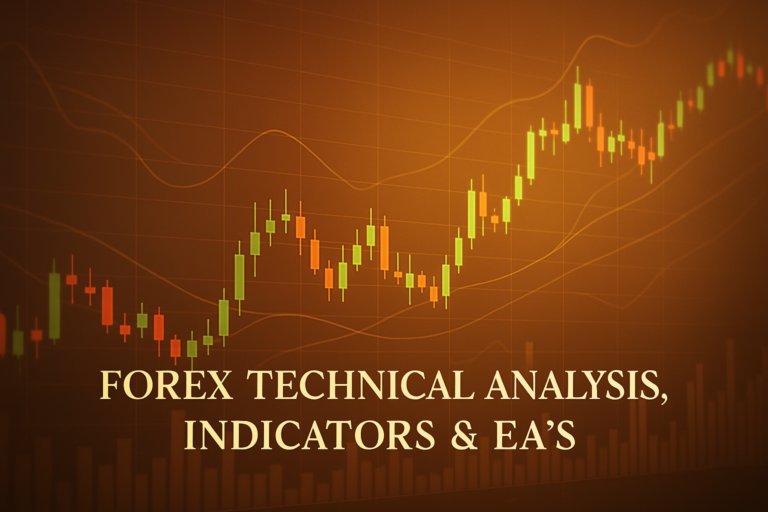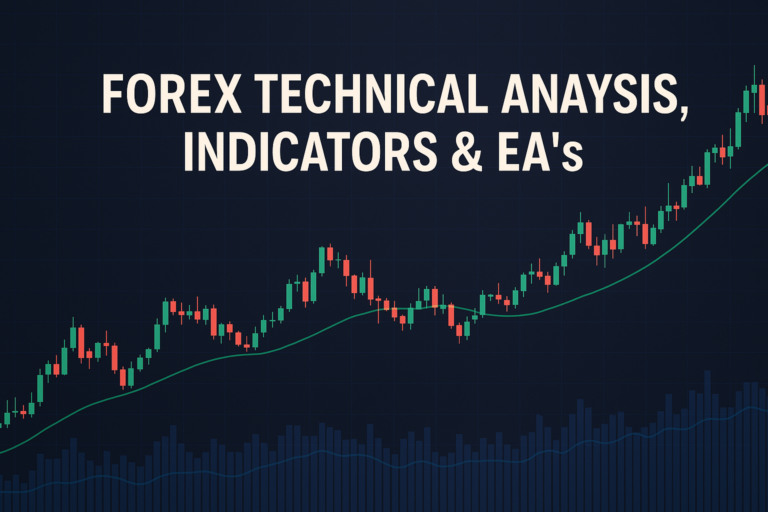
Trend Indicators help traders identify market trends, enhancing their Forex trading strategies for better decision-making.
Trend Indicators are crucial tools in Forex trading. They help traders identify the direction of price movements. Whether you are a beginner or a seasoned professional, understanding these indicators can significantly impact your trading experience. However, many traders struggle to grasp how to use them effectively. They may find themselves lost in complex charts, wondering why prices are moving in certain directions.
Knowing how to apply Trend Indicators can be the difference between success and failure in Forex trading. In this article, we will explore the basics of Trend Indicators, their history, advantages, and disadvantages. We will also provide step-by-step guides on how to apply them on trading platforms like MT4 and MT5. Finally, we’ll share multiple trading strategies that utilize Trend Indicators, along with answers to common questions. Let’s dive in!
What is a Trend Indicator?
Trend Indicators are tools that help traders understand the general direction of prices in the Forex market. Imagine you’re on a boat in the ocean. The waves can go up and down, but the current shows you the overall movement. Trend Indicators work similarly. They smooth out price fluctuations, allowing traders to see whether a currency pair is trending upwards or downwards.
Types of Trend Indicators
There are various types of Trend Indicators that traders can use:
- Simple Moving Average (SMA): This indicator calculates the average price over a set number of periods.
- Exponential Moving Average (EMA): This one gives more weight to recent prices, making it more responsive.
- Weighted Moving Average (WMA): Here, different prices are given different weights, allowing for a more nuanced view.
How Trend Indicators Smooth Out Price Action
Trend Indicators take the noise out of price movements. Instead of seeing every tiny price change, you get a clear line showing the trend. This is especially useful in volatile markets, where prices can swing wildly. By using these indicators, traders can decide when to enter or exit trades with more confidence.
Common Periods Used and Why
Traders often use specific time frames for Trend Indicators, such as 14 days or 50 days. Shorter periods can show quick trends, while longer periods reveal more significant movements. For example, a 50-day moving average can help you see where the price has been over a long time, giving you a broader perspective.
The History of Trend Indicators: How It Became Popular
Origin of Trend Indicators
The concept of Trend Indicators dates back to the early 20th century. One of the pioneers, Charles Dow, created the Dow Theory in 1884, which laid the groundwork for many modern indicators. He believed that by analyzing price movements, traders could predict future trends.
When Did Traders Start Using It Widely?
Trend Indicators became widely popular in the 1970s with the rise of computer technology. Traders could now easily analyze vast amounts of data. As a result, many began to embrace these indicators as essential tools in their trading strategies.
Real-Life Stories
Many professional traders attribute their success to Trend Indicators. For instance, one trader used moving averages to identify a strong upward trend in a currency pair. By following this trend, he made significant profits over several months. Stories like these inspire many newcomers to learn about Trend Indicators and incorporate them into their trading strategies.
Advantages and Disadvantages of Trend Indicators
Advantages
Trend Indicators offer several benefits:
- Helps Identify Trends Easily: They provide a clear visual representation of price movements.
- Useful for Dynamic Support and Resistance: They can help traders set potential entry and exit points.
- Works Well for Crossover Strategies: When two indicators cross, it can signal buying or selling opportunities.
Disadvantages
However, there are some downsides:
- lags Behind Price Movements: Trend Indicators often react slowly to price changes.
- Can Give False Signals in Sideways Markets: In a range-bound market, Trend Indicators may suggest trends that aren’t really there.
How to Apply Trend Indicators on MT4 & MT5
Step-by-step Guide to Adding Trend Indicators on Charts
Adding Trend Indicators to your charts on MT4 or MT5 is simple. First, open your trading platform. Then, click on the ‘Insert’ menu at the top. Choose ‘Indicators’ and then ‘Trend.’ Select the desired indicator and adjust settings as needed.
Customizing Trend Indicators Settings
You can customize the settings of your Trend Indicators. For example, change the period to see different time frames or adjust the color for better visibility. Personalizing these settings can enhance your trading experience.
Saving Templates for Easy Application
Once you’ve set up your preferred indicators, save the template. Go to ‘Template’ in the menu and click ‘Save Template.’ This way, you can quickly apply the same settings to new charts without starting from scratch.
5 to 7 Trading Strategies Using Only Trend Indicators
All Time Frame Strategy (M5 to D1)
This strategy can be used across various time frames. Traders look for a crossover between the EMA and SMA. Buy when the EMA crosses above the SMA, and sell when it crosses below. For example, if the EMA (10) crosses above the SMA (50) on the M15 chart, it signals a buy opportunity.
Trending Strategies
In trending markets, you can use the Average Directional Index (ADX) to confirm trends. When the ADX is above 25, it indicates a strong trend. Look for buying opportunities when the price is above the moving average and sell when it’s below.
Counter Trade Strategies
Sometimes, it’s wise to go against the trend. In this strategy, wait for the price to hit a moving average and show signs of reversal. For example, if the price touches the 50-day moving average but starts to decline, it could be a signal to sell.
Swing Trades Strategies
Swing traders can use Trend Indicators to identify potential reversal points. Look for divergences between the price and the indicators. If the price makes a higher high while the indicator makes a lower high, it could signal a reversal.
5 to 7 Trading Strategies Combining Trend Indicators with Other Indicators
All Time Frame Strategy (M5 to D1)
Combine the MACD with Trend Indicators for an effective strategy. Look for a strong trend indication from your chosen Trend Indicator. Then confirm with the MACD crossover. For instance, if the Trend Indicator signals a buy and the MACD crosses above zero, it’s a solid buy signal.
Trending Strategies
Using the RSI with Trend Indicators can enhance your entries. Wait for the price to show an uptrend according to your Trend Indicator. Then check the RSI. If it’s below 30, it may be a good buying opportunity.
Counter Trade Strategies
Combining Bollinger Bands with Trend Indicators can help identify overbought or oversold conditions. If the price touches the upper band while your Trend Indicator shows a downward trend, it may be wise to sell.
Swing Trades Strategies
Use Trend Indicators alongside Fibonacci retracement levels. After a strong trend, use the Fibonacci tool to identify potential reversal points. If the Trend Indicator signals a reversal at a key Fibonacci level, it may present a good trading opportunity.
Top 10 FAQs About Trend Indicators
1. What are Trend Indicators?
Trend Indicators are tools that help traders analyze the direction of price movements in the Forex market.
2. How do I choose the right Trend Indicator?
Choosing the right indicator depends on your trading style, time frame, and personal preferences.
3. Can Trend Indicators predict the future?
While they can indicate trends, they cannot predict future price movements with 100% accuracy.
4. How often should I check my Trend Indicators?
It depends on your trading strategy. Day traders may check them frequently, while swing traders may look at them less often.
5. Are Trend Indicators suitable for all markets?
Trend Indicators can be used in various markets but are most effective in trending conditions.
6. Can I use multiple Trend Indicators together?
Yes, many traders use multiple indicators to confirm signals and enhance their strategies.
7. What is the most popular Trend Indicator?
The Moving Average is one of the most commonly used Trend Indicators among traders.
8. How do I avoid false signals from Trend Indicators?
Use additional confirmation tools or indicators to validate signals before making trades.
9. What is the best time frame for Trend Indicators?
It varies by strategy. Shorter time frames may work for day trading, while longer time frames suit swing trading.
10. Are Trend Indicators easy to learn?
Yes, they are relatively straightforward, but understanding how to apply them effectively takes practice.
Conclusion
In summary, Trend Indicators are essential tools for both beginner and professional traders. They help simplify price movements and identify potential trading opportunities. By understanding how to apply and customize these indicators, you can enhance your trading strategies.
Remember to test your strategies on a demo account before risking real money. With practice and patience, you can master the use of Trend Indicators and improve your Forex trading experience.
Expand Your Knowledge
- 📌 Forex Trading Learning Road Map
- 📌 Forex Trading Course with no Fees
- 📌 Forex Trading Issues, Problems, and Solutions
- 📌 Forex Daily Forecast & Live Updates
- 📌 Forex Fundamental & News Analysis: Tomorrow’s Market Movers & Trade Opportunities
- 📌 Forex Education Hub: Learn & Profit
- 📌 Forex Technical Analysis, Indicators & EA’s
Start Trading Today
Ready to take your forex trading to the next level? Open an account with Exness, one of the most trusted platforms in the industry. 👉 Sign Up Now and start trading with confidence!
Exness stands out with ultra-low spreads for mini traders, instant withdrawals, and zero spread accounts for pro traders. Trusted since 2008, Exness offers lightning-fast execution, no hidden fees, and a secure, transparent trading environment—giving you the edge you need to succeed. 🚀 Join now and trade smarter!
Watch this helpful video to better understand Trend Indicators:
Note: The video above is embedded from YouTube and is the property of its original creator. We do not own or take responsibility for the content or opinions expressed in the video.
In the video, the presenter discusses the Super Trend Indicator, a powerful tool known for its simplicity and effectiveness in identifying market trends. The Super Trend Indicator not only tracks market momentum but also incorporates Average True Range (ATR), which accounts for market volatility. However, while this indicator can be useful on its own, it often generates buy and sell signals even during sideways market movements, leading to potential losses. To enhance its predictive capabilities, the video introduces a unique strategy that involves using three Super Trend indicators on a trading chart. By adjusting their settings, traders can better identify genuine trends. The strategy only allows entries when all three indicators align in color, ensuring that trades are made only during strong market momentum. This approach helps filter out false signals and improves the likelihood of successful trades.
In addition to the three Super Trend indicators strategy, the video also presents methods for exiting trades effectively, such as setting a take-profit at a 1.5 profit ratio or exiting when any of the indicators change color. Another strategy introduced is pairing the Super Trend Indicator with a 200-day moving average to combine short-term and long-term trends. Traders are advised to enter long positions when the Super Trend line is green and the price is above the moving average, while short positions should be taken when the line is red and the price is below. The presenter also introduces a bonus strategy using the Ichimoku indicator, which helps traders determine entry points based on the position of the price relative to the Kumo cloud. Overall, the video provides valuable insights into enhancing trading strategies with the Super Trend Indicator, encouraging viewers to try out the methods discussed and share their experiences.



